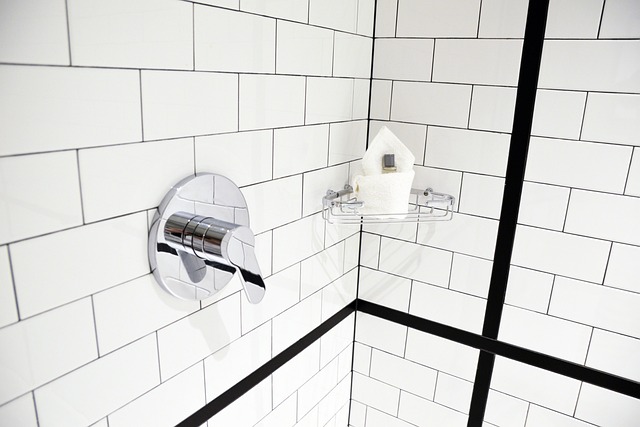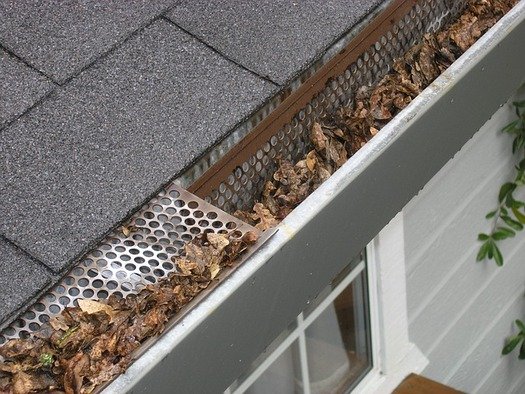An ultimate guide is meant to facilitate users with complete knowledge and relevant tips about a certain subject. Today, we’ll take you along the journey of understanding the art of tile and grout cleaning, and trust us, it’s not as confusing or difficult as it sounds! It’s just some good old knowledge mixed with a handful of handy tips. We hope this guide will make your chores just a bit lighter, and your tiles a lot brighter! Let’s start, shall we?
“Tile and Grout Cleaning” – Sounds daunting, doesn’t it? Well, it doesn’t have to. Tiles are durable, practical and often the main choice in rooms that are most likely to get dirty. They work wonderfully in our bathrooms and kitchens, not to mention hallways and laundry rooms. However, maintaining the original look of tiles is no easy task. From dirt and grime to mould, anything can settle on your tiles and especially in the grout, making them dull with time. This guide intends to assist you on how to keep your tiles glowing and grout spotless just as it was when first installed.
Table of Contents
Understanding Tile and Grout
Before we jump into the cleaning process, it’s important to understand the nature of tiles and grout. Tiles come in various materials, including ceramic, porcelain, natural stone, and more. Grout, on the other hand, is the material used to fill the gaps between tiles. Here’s what you need to know:
- Types of Tiles: Different types of tiles require different cleaning methods. Ceramic and porcelain tiles are popular choices for their durability and low maintenance. Natural stone tiles, such as marble or granite, need extra care due to their porous nature. Identify the type of tiles you have to determine the appropriate cleaning approach.
- Grout Composition: Grout is usually made from a mixture of cement, sand, and water. It acts as a sealant and provides stability to the tiled surface. Grout is susceptible to staining and discolouration over time, especially in areas with high humidity or frequent moisture exposure.
Essential Tools and Materials
Now that you understand the basics, let’s gather the necessary tools and materials to tackle your tile and grout cleaning project. Here are the essentials:
- Protective Gear: Before you start cleaning, make sure to protect yourself. Wear rubber gloves, safety goggles, and a mask to shield your skin, eyes, and respiratory system from any potentially harmful chemicals or debris.
- Soft Bristle Brush: Invest in a good quality soft-bristle brush, as it will be your best friend when it comes to scrubbing the tiles and grout. Choose a brush that is appropriate for the size of the tiles and the severity of the dirt buildup.
- Tile Cleaner: Select a tile cleaner that is suitable for the type of tiles you have. Avoid using acidic cleaners on natural stone tiles, as they can cause damage. Look for a pH-neutral or mild alkaline cleaner that is safe for your specific tiles.
- Grout Cleaner: For heavily stained or discoloured grout, a specialized grout cleaner can work wonders. Look for a cleaner that is effective yet gentle on your grout. Remember to follow the manufacturer’s instructions carefully.
- White Vinegar: White vinegar is a natural and inexpensive alternative for cleaning tiles and grout. Its acidic properties make it effective against stains and mildew. Mix equal parts of vinegar and water in a spray bottle for an easy homemade cleaner.
Tile and Grout Cleaning Process
Now that you’re equipped with the necessary tools and materials, it’s time to roll up your sleeves and start cleaning those tiles and grout. Follow these step-by-step instructions for sparkling results:
- Preparation: Clear the tiled area of any loose debris or objects. Sweep or vacuum the floor to remove dust and dirt. If you’re cleaning wall tiles, protect the surrounding areas with plastic sheeting or towels.
- Spot Test: Before applying any cleaner to the entire surface, perform a spot test on a small, inconspicuous area. This will ensure that the cleaner doesn’t cause any damage or discolouration to your tiles or grout.
- Tile Cleaning: Start by applying the tile cleaner to the tiles. Use a soft-bristle brush to scrub the tiles gently in a circular motion. Pay extra attention to any stained or soiled areas. Rinse the tiles thoroughly with clean water to remove any residue.
- Grout Cleaning: Once the tiles are clean, it’s time to focus on the grout. Apply the grout cleaner directly to the grout lines and let it sit for a few minutes to penetrate the stains. Use the soft-bristle brush to scrub the grout in a back-and-forth motion. For stubborn stains, you can use a grout brush or an old toothbrush for more precision.
- Rinse and Dry: After scrubbing the grout, rinse the entire area with clean water to remove any residue from the cleaning products. Use a clean, dry cloth or mop to absorb excess moisture from the tiles and grout. Proper drying is essential to prevent the growth of mould or mildew.
Post-Construction Cleaning: Top Tips and Tricks
Maintenance Tips for Long-lasting Results
Congratulations! Your tiles and grout are now sparkling clean. To maintain their pristine condition, consider implementing these maintenance tips:
- Regular Cleaning Routine: Incorporate regular tile and grout cleaning into your home maintenance schedule. Sweep or vacuum the tiles regularly to remove loose dirt and debris. Wipe down the tiles with a damp cloth or mop to prevent the buildup of grime.
- Sealing the Grout: Consider applying a grout sealer to protect the grout from stains and discolouration. The sealer creates a protective barrier that repels liquids and makes cleaning easier. Consult with a professional or refer to the manufacturer’s instructions for the appropriate sealer for your grout type.
- Preventing Moisture Buildup: Excess moisture can lead to mould and mildew growth in your grout. Use exhaust fans or open windows in areas with high humidity, such as bathrooms or kitchens. Wipe up spills promptly to prevent them from seeping into the grout.
- Avoid Harsh Cleaners: While it’s important to keep your tiles and grout clean, avoid using harsh or abrasive cleaners on a regular basis. These cleaners can damage the surface of the tiles or strip away the protective sealant on the grout. Stick to mild cleaners or natural alternatives for day-to-day maintenance.
15 Tips for Cleaning and Maintaining Your Home’s Flooring (Carpet, Hardwood, Tile)
Conclusion
Maintaining clean and well-maintained tiles and grout doesn’t have to be a daunting task. By following the tips and techniques outlined in this ultimate guide, you can achieve remarkable results and enjoy the beauty of your tiled surfaces. Remember to choose the appropriate cleaning products, protect yourself, and establish a regular maintenance routine.
You should no longer shiver at the mention of tile and grout cleaning! With the right understanding and methods, it’s such a manageable task. As crucial as it is to keep your tiles clean for a neat appearance, maintaining hygiene is just as important. Plus, don’t forget that it also increases the life of your floor.
All you need is a bit of patience, routine care and the right information, which we sincerely hope has been provided by this guide. If you remember to treat your tiles with love and care, they’re going to gleam back at you with appreciation!
Remember to clean smart, not hard. Here’s to cleaner, shinier, happier homes!
So, there you have it, folks – your ultimate guide to tile and grout cleaning. We trust this shall make your efforts worthy and effective. Happy cleaning!














